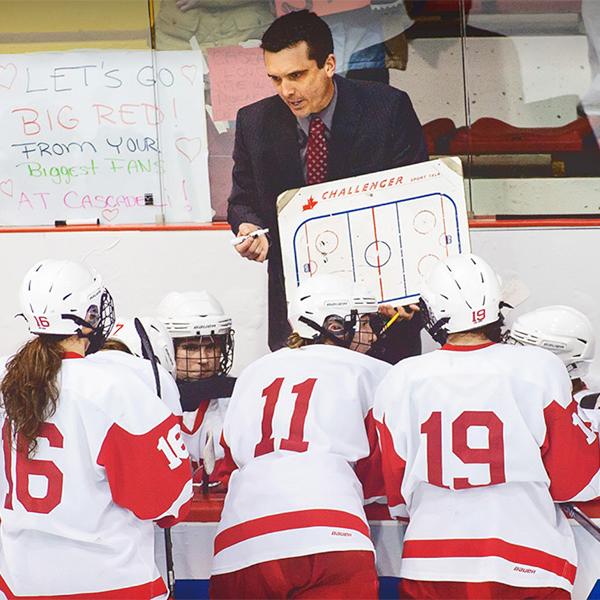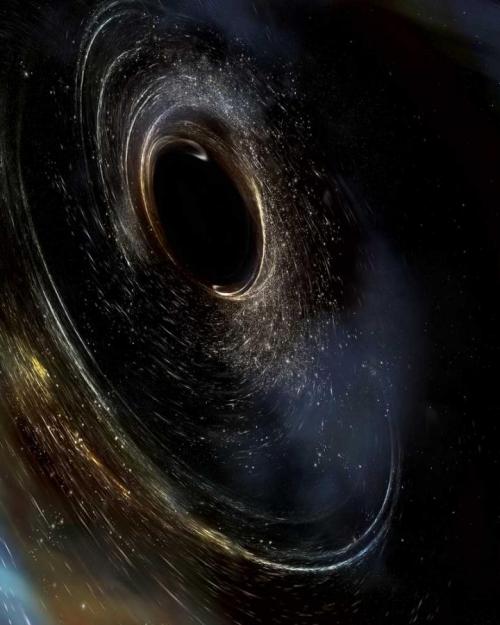When two black holes collide into each other to form a new bigger black hole, they violently roil spacetime around them, sending ripples called gravitational waves outward in all directions. Previous studies of black hole collisions modeled the behavior of the gravitational waves using what is known as linear math, which means that the gravitational waves rippling outward did not influence, or interact, with each other. Now, a new analysis has modeled the same collisions in more detail and revealed so-called nonlinear effects.
“Nonlinear effects are what happens when waves on the beach crest and crash” said corresponding author Keefe Mitman, a Caltech graduate student who works with Saul Teukolsky, Hans A. Bethe Professor Emeritus of Physics in the College of Arts and Sciences. “The waves interact and influence each other rather than ride along by themselves. With something as violent as a black hole merger, we expected these effects but had not seen them in our models until now. New methods for extracting the waveforms from our simulations have made it possible to see the nonlinearities.”
The research, published Feb. 22 in Physical Review Letters, was done by an international team of researchers at Cornell University, Caltech, Columbia University, University of Mississippi and the Max Planck Institute for Gravitational Physics.
In the future, the new model can be used to learn more about the actual black hole collisions that have been routinely observed by LIGO (Laser Interferometer Gravitational-wave Observatory) ever since it made history in 2015 with the first direct detection of gravitational waves from space. LIGO will turn back on later this year after getting a set of upgrades that will make the detectors even more sensitive to gravitational waves than before.
The co-authors are part of a team called the Simulating eXtreme Spacetimes collaboration, or SXS. Founded by Teukolsky in collaboration with Nobel Laureate Kip Thorne (BS ’62), Richard P. Feynman Professor of Theoretical Physics, Emeritus, at Caltech, the SXS project uses supercomputers to simulate black hole mergers. The supercomputers model how the black holes evolve as they spiral together and merge using the equations of Albert Einstein’s general theory of relativity. In fact, Teukolsky was the first to understand how to use these relativity equations to model the “ringdown” phase of the black hole collision, which occurs right after the two massive bodies have merged.
“Supercomputers are needed to carry out an accurate calculation of the entire signal: the inspiral of the two orbiting black holes, their merger, and the settling down to a single quiescent remnant black hole,” Teukolsky said. “The linear treatment of the settling down phase was the subject of my Ph.D. thesis under Kip quite a while ago. The new nonlinear treatment of this phase will allow more accurate modeling of the waves and eventually new tests of whether general relativity is, in fact, the correct theory of gravity for black holes.”
The SXS simulations have proved instrumental in identifying and characterizing the nearly 100 black hole smashups detected by LIGO so far. This new study represents the first time that the team has identified nonlinear effects in simulations of the ringdown phase.
“Imagine there are two people on a trampoline,” Mitman says. “If they jump gently, they shouldn’t influence the other person that much. That’s what happens when we say a theory is linear. But if one person starts bouncing with more energy, then the trampoline will distort, and the other person will start to feel their influence. This is what we mean by nonlinear: the two people on the trampoline experience new oscillations because of the presence and influence of the other person.”
In gravitational terms, this means that the simulations produce new types of waves.
In the big picture, these new simulations will help researchers to better characterize future black hole collisions observed by LIGO and to better test Einstein’s general theory of relativity. It will also improve our understanding of gravity, say the researchers.
The study titled “Nonlinearities in black hole ringdowns,” was funded by the Sherman Fairchild Foundation, National Science Foundation, the Innovative Theoretical Cosmology Fellowship of Columbia University, the Department of Energy, and the Simons Foundation.





